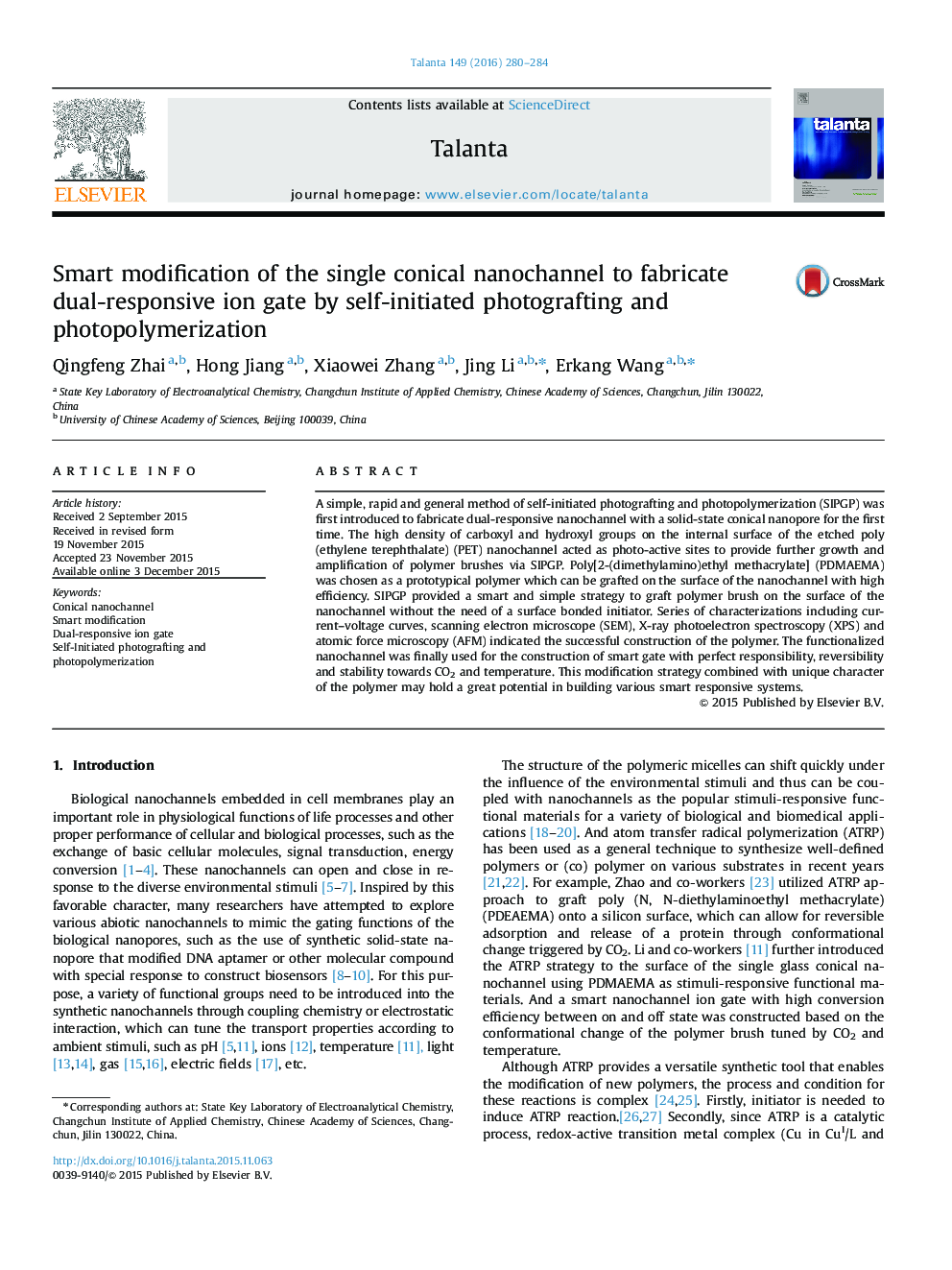| Article ID | Journal | Published Year | Pages | File Type |
|---|---|---|---|---|
| 1241833 | Talanta | 2016 | 5 Pages |
•Smart modification to fabricate a dual-responsive ion gate with a conical nanopore.•Self-initiated photografting and photopolymerization (SIPGP) was first introduced in modifying nanopore.•Provided a simple method to graft polymer on the surface of the nanochannel without initiator.•The smart gate with perfect responsibility, reversibility and stability towards CO2 and temperature.
A simple, rapid and general method of self-initiated photografting and photopolymerization (SIPGP) was first introduced to fabricate dual-responsive nanochannel with a solid-state conical nanopore for the first time. The high density of carboxyl and hydroxyl groups on the internal surface of the etched poly(ethylene terephthalate) (PET) nanochannel acted as photo-active sites to provide further growth and amplification of polymer brushes via SIPGP. Poly[2-(dimethylamino)ethyl methacrylate] (PDMAEMA) was chosen as a prototypical polymer which can be grafted on the surface of the nanochannel with high efficiency. SIPGP provided a smart and simple strategy to graft polymer brush on the surface of the nanochannel without the need of a surface bonded initiator. Series of characterizations including current–voltage curves, scanning electron microscope (SEM), X-ray photoelectron spectroscopy (XPS) and atomic force microscopy (AFM) indicated the successful construction of the polymer. The functionalized nanochannel was finally used for the construction of smart gate with perfect responsibility, reversibility and stability towards CO2 and temperature. This modification strategy combined with unique character of the polymer may hold a great potential in building various smart responsive systems.
Graphical abstractFigure optionsDownload full-size imageDownload as PowerPoint slide
